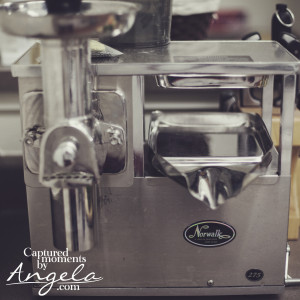5 Foods for the Summer Season that Cool, Nourish, and Detoxify the Body
Watermelon
The cooling qualities of watermelon make it wonderful for a quick and easy summer detox staple. Add the delicious factor into the mix, and you’re sailing along with a warm weather cleansing trifecta! With positive effects on the kidney, bladder, heart, stomach, colon, and liver, watermelon works to cleanse (nearly) the entire body! According to traditional Chinese medicine, it cools the energetic channels in the body that are dominated by fire-making.  It is therapeutically helpful in cases of urinary tract infections. for those who cannot tolerate high sugar foods, watermelon juice can be fermented (using the same cultures and process as kefir) into a refreshingly fizzy, sugar-free drink.
It is therapeutically helpful in cases of urinary tract infections. for those who cannot tolerate high sugar foods, watermelon juice can be fermented (using the same cultures and process as kefir) into a refreshingly fizzy, sugar-free drink.
Sprouts
Sprouts are, literally, bursting with life. Sprouting is the natural process of transforming a dormant seed to a living seed. Grains, legumes, and other seeds that have been sprouted sport an impressive amount of precious enzymes, and aside from being important to digestion, enzymes play a role in the ongoing process of detoxification. Sprouts are rich in plant-based protein and are an excellent source of dietary fiber, vitamins, and minerals. To top it all off, sprouts offer an easy way to keep fresh, inexpensive food in your home, year round.
Cucumber
Largely due to faddish, eye-covering cucumber pics strewn about nearly every magazine, few of us are a stranger to the cooling potential of cucumber. Chinese medicine believes that cucumber has a cleansing effect on the blood and clears internal heat from the body, which is helpful for inflammatory conditions…it also believes cucumbers have a soothing effect on the nerves and aid in the treatment of insomnia. While this cooling fruit’s thirst quenching nature makes it a great summer treat eaten alone, it is equally incredible juiced and/or infused into a pitcher of water- in the same way many people do with lemon or lime.
Aloe Vera
There is a reason that bottles of aloe vera gel line grocery store shelves every summer season. if you have ever sliced open an aloe leaf to slather it over a sunburn, you’re already familiar with its cooling savvy. Taken internally, aloe reduces heat and has intestinal stimulating abilities. for this reason, when used mindfully, it can be an effective treatment for constipation. While good quality, organic bottled aloe can be found, it is best fresh, scooped straight from the leaf, with all of its cooling constituents entirely intact.
Purslane
Ahhh…..purslane. ((Love!)) Purslane is a special plant~ rare in its qualities, but not in its findings. it is actually a very common and beneficial weed. What is extraordinarily brilliant about purslane is its omega 3 content- unusual for a land vegetable, as most omega 3 comes from oily fish and micro-algae. Like many of the other hot weather friendly foods, purslane is a contender when it comes to cooling inflammation in the body. it is a potent detoxifier and effectively dissipates internal heat. Make an omega 3 rich meal by adding a handful of purslane- fresh from the yard- into your favorite salad or smoothie.
 cancer, besides healthy foods of course. Restoring health is priceless!
cancer, besides healthy foods of course. Restoring health is priceless!